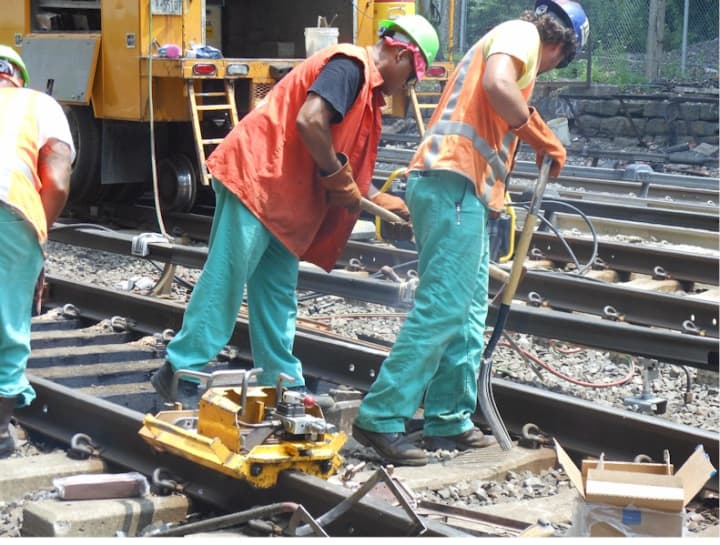Work has been completed on the second of four tracks in the Melrose and Woodlawn area, but considerable work remains on the six-mile section of the railroad, the railroad said. Work has also been expanded to other areas of the Bronx and parts of the railroad to the east and north.
Metro-North said it has tried to minimize delays as a result of the track work, despite the fact that track capacity has been reduced by one-fourth to one-half, depending on the time of day.
The Right-of-Way Improvements Program will restore the high reliability of Metro-North train service through this important section of the railroad and improve the commute, the MTA website said.
Track equipment that employs state-of-the-art technology has been contracted by Metro-North to assess the railroad tracks. “These extraordinary tests are giving us in-depth information on conditions that we should correct – both in the short and long term,” Metro-North said. “Maintaining the railroad in the best condition possible is not only smart railroading; it is safe railroading. Rather than wait until a problem develops, we are immediately taking the necessary steps to ensure the long-term integrity of our tracks.”
Metro-North said it’s using the following new, high-tech equipment to inspect the tracks: Ground Penetrating Radar (GPR), which can accurately show potential problem areas in the structural layers below the track’s surface before anyone starts digging, and Track Loading Vehicle (TLV), which is technology that leads the industry’s efforts in assessing track conditions – designed to apply forces close to the strength limits of the rails, track ties, rail fasteners, and ballast (stone).
GPR has been used to inspect 85 percent of Metro-North’s tracks, equivalent to 620 track miles, while the TLV has analyzed the entire New Haven Line and it will now move to the Harlem and Hudson.
Click here to follow Daily Voice Greenburgh and receive free news updates.


